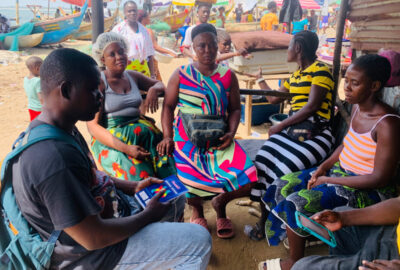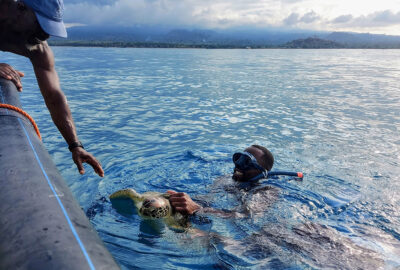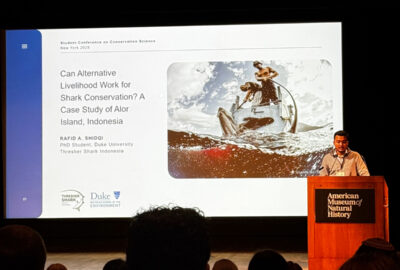In-Water Studies of Sea Turtles from the Gulf of Paria, Venezuela
With the help of local fishers, MCAF Project Leader Clemente Balladares is working to monitor and preserve sea turtle populations.


This post is one of a series on projects supported by the New England Aquarium’s Marine Conservation Action Fund (MCAF). Through MCAF, the Aquarium supports researchers, conservationists, and grassroots organizations around the world as they work to address the most challenging problems facing the ocean.
By Clemente Balladares
As we know, sea turtles as a species are at risk. To conserve and research them, we continuously follow the nesting activity at the main rookeries. However, recording effective nest numbers could give a biased idea of the female population in the studied region. This is due to repeated nesting by one female during one season or lack of nests from the same nester in several years. Moreover, information about the juvenile and male populations is very important to understand sex proportion, which guarantees survival of the species.

First, we wanted to know the numbers of the neritic sea turtle population—those in shallower coastal waters—near the main nesting site in the Gulf of Paria in Venezuela, close to the west frontier of Trinidad and Tobago. We made biweekly controlled captures, doing sizing, applying Inconel metallic tags, and then releasing the turtles. We performed these captures early in the morning from April 2023 until March 2024 using a 100×10 meter (0.15m mesh pore) net with floaters at the surface in the first 200 meters off Los Garzos beach. To perform the study, we included the participation of two local boaters, four seamen trained by us, and information on incidental sea turtle captures by the fishers of the Macuro town in the landing port of Aricagua and the same village. Funding came from MCAF, Minec, and the International Sea Turtle Society (ISTS).
The preliminary results of this twelve-month period of research were as follows: the in-water local team completed 38 hours of 20 net hauls; 17 sea turtles total were taken from the water, almost 1.42 individuals each month; 14 were green turtles (Chelonia mydas), 10 of them juveniles; and only three were the critically endangered hawksbill (Eretmochelys imbricata), all males. The paradox of these results is that the Gulf of Paria, known as the second largest nesting rookery of hawksbill sea turtles in the southern Caribbean Sea, showed that 82.35% of sea turtles captured in-water were green sea turtles, and no hawksbill females were observed in these coastal waters.
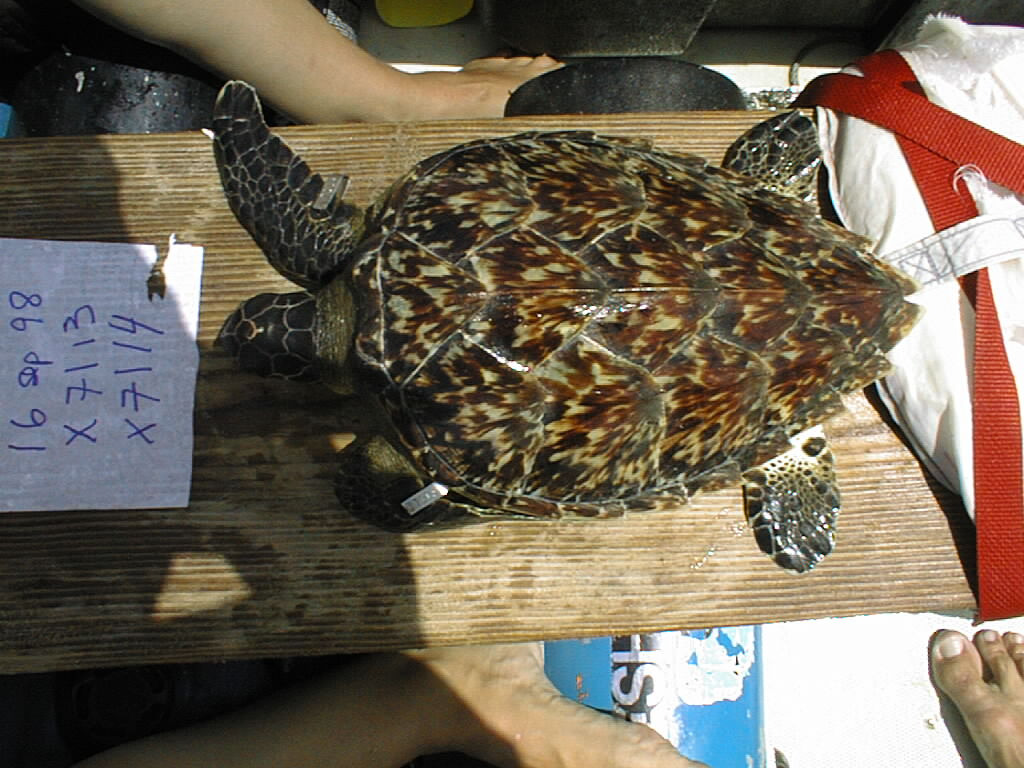
One extraordinary finding was the recapture of a sub-adult hawksbill male tagged in Monito Inlet (Puerto Rico) on September 16, 1998, by Rob Van Dam and Carlos Diez. This means that a juvenile of 30cm curved carapace length (CCL) tagged 25 years ago as X7113/4 was recaptured on September 25, 2023. The size now is 76cm CCL and the turtle was retagged as V014/5M. So, this male covered a distance of more than 1000 kilometers between Monito and Los Garzos, and we do not know how many times he traveled such a sea basin.
The fishers’ help was relevant because they reported eight incidental captures: six juvenile green turtles and two hawksbills. Our seamen were informed in time to size, tag, and release these turtles. These included the biggest male hawksbill captured at 78cm CCL. Hauls reported two live greens with fibropapillomas (tumors). During the months of April and May of 2023, it was almost impossible to deploy the net due to the abundance of the brown algae Sargassum close to the coast of the main nesting beaches in the Gulf of Paria. Finally, the predominance of juvenile green sea turtles revealed a new unreported foraging area for this vulnerable species.
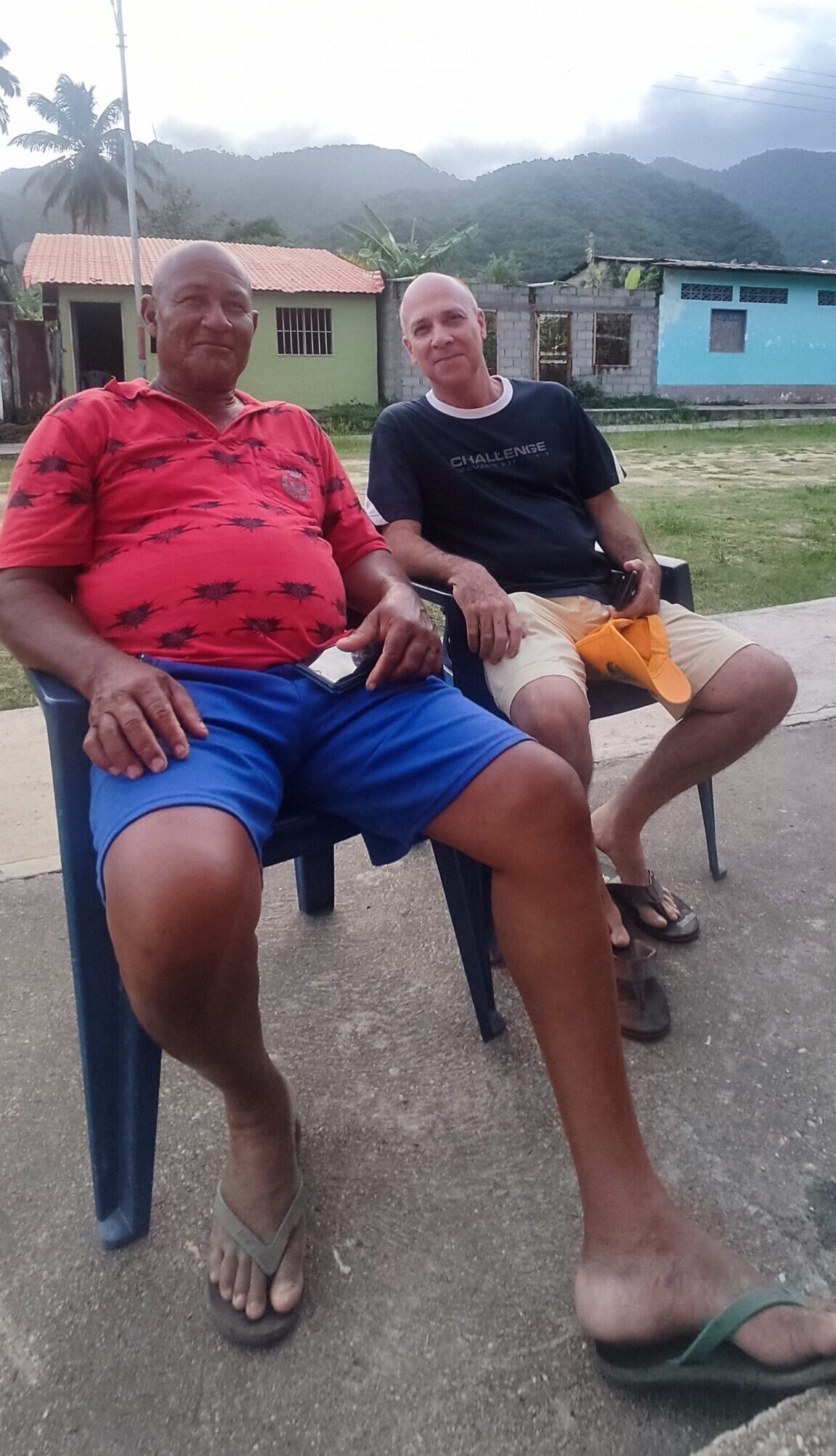
We are continuing this study for six more months in 2024 in order to look for new individuals and recaptures and to gather more information on population numbers, fishery interactions, and illness, learning from these observations together with local help. In the near future, we hope to integrate these results with the female nesting population and do some modeling to have a better idea of the sea turtle community in the region. This activity is mainly funded by MCAF, which also promotes the awareness and welfare of the fishermen of the Macuro town.
Thanks so much to Mr. Damaso Urbano and Eleazar “Chal” Salazar, our boaters, the expert seamen Jose Reinoza and Modesto Garcia, and the new younger local assistants Oliver Mata and Eduardo Orfila. And as always, our friend and liaison officer, Don Luis Cova. Finally, to the Marine Conservation Action Fund and the International Sea Turtle Society.

